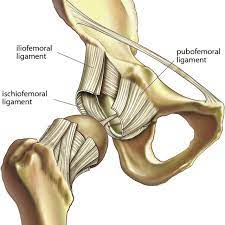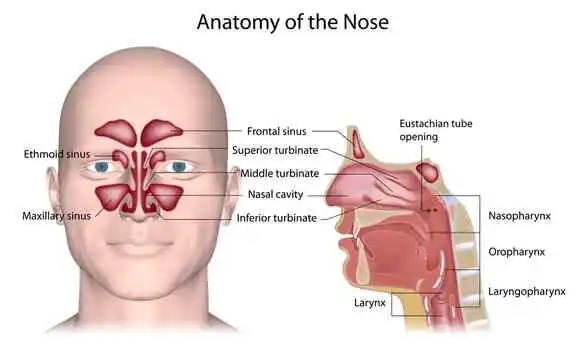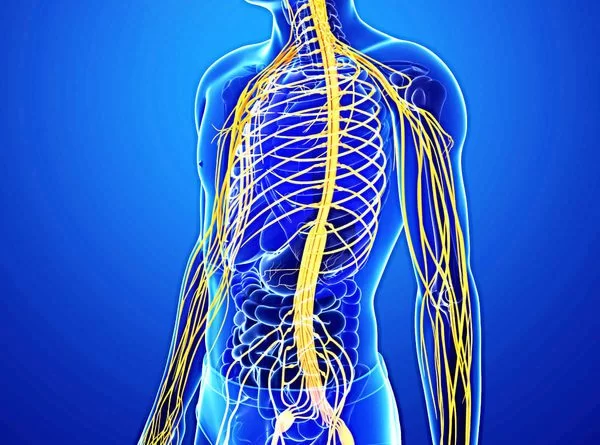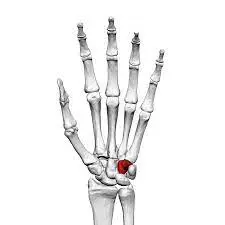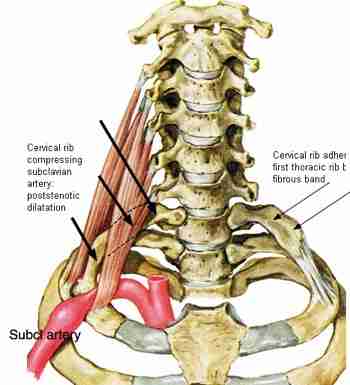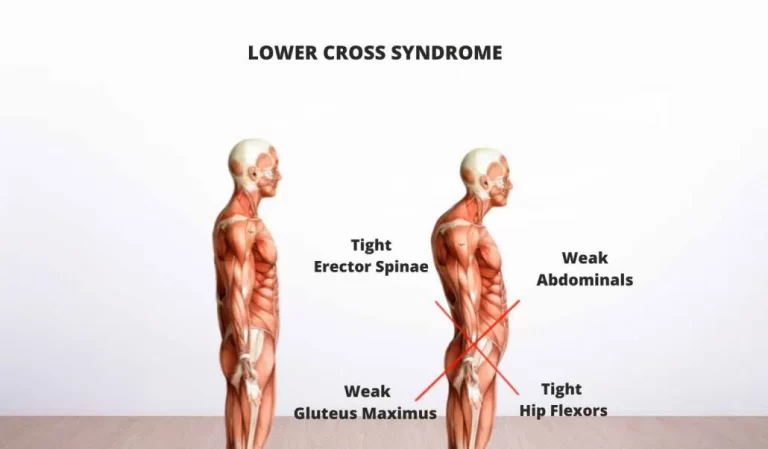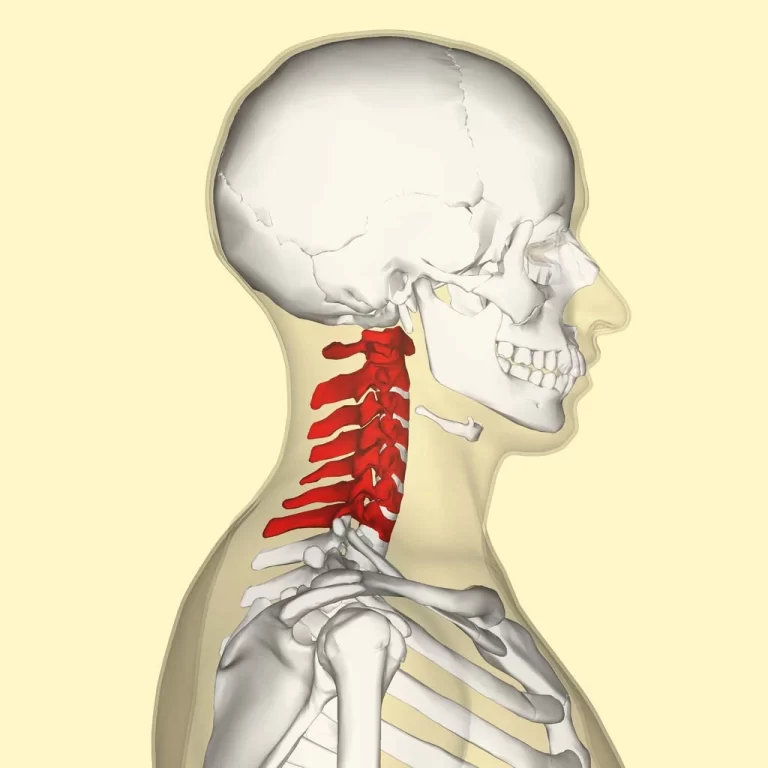Hip Ligament
Table of Contents
Introduction
Hip ligaments are strong bands of tissue that connect the bones of the hip joint and provide stability to the joint. The head of the femur (thigh bone) fits into a socket in the pelvis, making the hip joint a ball-and-socket joint.
The hip joint is surrounded by several ligaments, including the iliofemoral ligament, pubofemoral ligament, and ischiofemoral ligament. These ligaments work together to support the hip joint during movement and prevent excessive movement that could cause injury. Hip ligament injuries can occur due to trauma, overuse, or degenerative changes and may cause pain, stiffness, and difficulty with movement.
Treatment for hip ligament injuries may include rest, physical therapy, and in some cases, surgery. Preventative measures for hip ligament injuries include maintaining good physical conditioning, using proper technique during physical activity, and addressing environmental factors such as uneven surfaces or poor lighting.
Ligaments of the Hip Joint
The hip joint is connected by several ligaments. Ligaments are strong bands of connective tissue that connect bones to each other and provide stability to the joint.
There are three main ligaments that surround the hip joint: the iliofemoral ligament, the pubofemoral ligament, and the ischiofemoral ligament. These ligaments work together to provide stability to the hip joint and prevent excessive movement that could cause injury.
The iliofemoral ligament is the strongest of the three hip ligaments and is located at the front of the hip joint. It connects the ilium (part of the pelvis) to the femur and helps to prevent excessive extension (backward movement) of the hip joint. This ligament is also known as the Y ligament of Bigelow.
The pubofemoral ligament is located at the front of the hip joint and connects the pubis (another part of the pelvis) to the femur. It helps to prevent excessive abduction (outward movement) and extension of the hip joint.
The ischiofemoral ligament is located at the back of the hip joint and connects the ischium (yet another part of the pelvis) to the femur. It helps to prevent excessive internal rotation (inward movement) of the hip joint.
In addition to these three main ligaments, there are also several smaller ligaments that support the hip joint. These include the ligamentum teres, which connects the femoral head to the acetabulum (the socket in the pelvis), and the zona orbicularis, which surrounds the acetabulum and helps to stabilize the joint.
Functions of the hip joint ligament
The hip ligaments have several important functions in the hip joint:
- Stability: The hip ligaments provide stability to the hip joint by connecting the bones of the pelvis and femur. They prevent excessive movement of the joint that could cause injury or damage.
- Range of motion: While the hip ligaments help to limit excessive movement, they also allow for a certain range of motion in the joint. This range of motion is necessary for normal activities such as walking, running, and bending.
- Shock absorption: The hip joint is subject to a lot of stress and impact during physical activity. The ligaments help to absorb some of this shock and distribute it evenly throughout the joint.
- Joint lubrication: The hip ligaments, along with other structures in the joint, help to produce synovial fluid. This fluid acts as a lubricant for the joint, reducing friction and allowing for smoother movement.
- Joint nutrition: The hip ligaments, along with other structures in the joint, also help to provide nutrients to the cartilage and other tissues in the joint. This is important for maintaining the health and function of the joint over time.
so in the end, the hip ligaments play a crucial role in supporting the weight of the body and facilitating movement. They provide stability, range of motion, shock absorption, joint lubrication, and joint nutrition. It is important to take care of these ligaments to prevent injury and maintain mobility.
Injuries of the hip joint ligament
Hip ligament injuries can occur due to a variety of reasons, such as sudden twisting or impact, overuse, repetitive motion, structural abnormalities in the hip joint, or degenerative conditions like osteoarthritis. The ligaments in the hip joint provide stability and support to the joint, allowing for smooth movement and preventing dislocation.
Hip Sprain: A hip sprain occurs when the ligaments in the hip joint are stretched or torn. This can happen due to sudden twisting or impact, such as in a fall or sports injury. Overuse or repetitive motion can also cause a hip sprain. Symptoms of a hip sprain may include pain, swelling, and difficulty moving the hip joint.
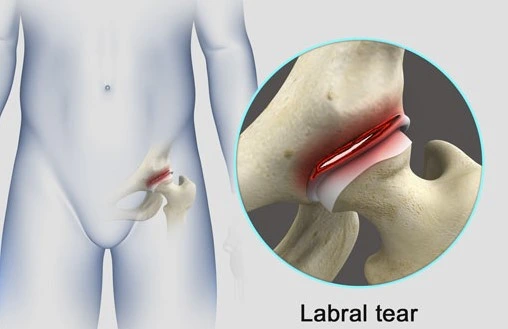
Hip Labral Tear: It is a ring of cartilage that lines the rim of the hip. A tear in the labrum can occur due to trauma or repetitive motion, such as in athletes who perform repetitive twisting motions. Symptoms may include pain, stiffness, and clicking or locking in the hip joint.
Hip Impingement: Hip impingement occurs when there is abnormal contact between the bones of the hip joint, causing pain and damage to the surrounding structures, including the ligaments. This can be caused by structural abnormalities in the hip joint or repetitive stress on the joint. Symptoms may include pain in the groin or hip area, stiffness, and decreased range of motion.
Osteoarthritis: Osteoarthritis is a degenerative condition that affects the joints, including the hip joint. Over time, the cartilage in the joint can wear down, causing pain and stiffness. This can also affect the ligaments in the hip joint, leading to instability and weakness.
Bursitis: Bursitis is an inflammation of the bursae, which are tiny sacs filled with fluid that lubricate and cushion joints. When the bursae in the hip joint become inflamed, it can cause pain and swelling in the area, which can also affect the ligaments.
How to assess hip ligament injuries
Assessing hip ligament injuries typically involves a combination of physical examination techniques, patient history, and imaging studies. Here is a detailed assessment of hip ligament injuries:
Patient history:
Begin by obtaining a thorough history from the patient, including information about the onset of symptoms, any traumatic events, previous hip injuries, and any relevant medical conditions. This can provide important clues about the nature and potential causes of hip ligament injury.
Physical examination:
- Inspection: Observe the patient’s gait, posture, and any visible signs of swelling, bruising, or deformity around the hip joint.
- Palpation: Gently palpate the hip joint and surrounding structures to identify areas of tenderness or localized pain. Pay attention to specific ligamentous attachment sites such as the iliofemoral ligament, ischiofemoral ligament, and pubofemoral ligament.
- Range of motion: Assess the patient’s active and passive range of motion in the hip joint, looking for any limitations, pain, or instability. This may involve movements such as flexion, extension, abduction, adduction, internal rotation, and external rotation.
- Stability tests: Perform stability tests to evaluate the integrity of the hip ligaments. These may involve the anterior drawer test, posterior drawer test, and abduction stress test. These tests involve applying controlled forces to the hip joint to assess for abnormal movement or laxity.
Special tests: Depending on the suspected ligament injury, additional specialized tests may be performed. For example:

- FABER (Flexion, Abduction, External Rotation) test: This test is used to assess the integrity of the hip joint capsule and the iliopsoas muscle.
- Thomas test: This test evaluates the flexibility of the hip flexors and helps identify any tightness or contracture that may contribute to hip pain or instability.
- Ober’s test: This test assesses the tightness or contracture of the iliotibial (IT) band, a common cause of lateral hip pain.
Imaging studies: Imaging studies may be ordered to confirm the diagnosis or to rule out other possible causes of hip pain. These may include:
- X-rays: X-rays can help visualize bony abnormalities, fractures, or signs of osteoarthritis.
- Magnetic Resonance Imaging (MRI): MRI can provide detailed images of soft tissues, including ligaments, tendons, and muscles, allowing for a more accurate assessment of ligament injuries.
- Ultrasound: Ultrasound may be used to evaluate soft tissue structures in real-time, such as identifying fluid accumulation or tears in ligaments.
Referral for further evaluation: In cases where the extent of the injury is unclear or if conservative management is not effective, referral to a specialist such as an orthopedic surgeon or sports medicine physician may be necessary. They can provide additional diagnostic tests or interventions, such as arthroscopy, to further evaluate and treat the hip ligament injury.
It is very crucial to take in mind that the assessment of hip ligament injuries requires expertise and should be performed by a medical person trained in musculoskeletal examination techniques. This ensures accurate diagnosis and appropriate management for the patient.
Treatment for hip ligament injuries
The treatment of hip ligament injuries depends on the severity and specific ligament involved. Here is a detailed explanation of the treatment options for hip ligament injuries:
Conservative management: For mild to moderate ligament injuries, conservative management is often the initial approach. This may include:
- Rest: Avoid activities that exacerbate pain or put stress on the hip joint. This allows time for the ligament to heal.
- Ice therapy: Applying ice packs to the affected area can help reduce pain, swelling, and inflammation. Ice should be given for 15-20 minutes at a time, a few times a day.
- Pain medication: Over-the-counter nonsteroidal anti-inflammatory drugs (NSAIDs), such as ibuprofen or naproxen, can help relieve pain and reduce inflammation.
- Physical therapy: A physical therapist can design an individualized rehabilitation program that includes exercises to strengthen the hip muscles, improve range of motion, and promote stability. They may also use modalities such as ultrasound or electrical stimulation to aid in the healing process.
- Assistive devices: Crutches or a cane may be recommended to offload weight from the injured hip and provide support during walking.
Immobilization: In some cases, immobilization may be necessary to allow the ligament to heal properly. This can involve the use of a brace, splint, or cast to restrict movement and provide stability to the hip joint. The duration of immobilization will depend on the specific ligament involved and the extent of the injury.
Injections: In certain situations, injections may be used to alleviate pain and inflammation associated with hip ligament injuries. These can include corticosteroid injections or platelet-rich plasma (PRP) injections. Corticosteroid injections provide temporary relief by reducing inflammation, while PRP injections use concentrated platelets from the patient’s own blood to promote healing.
Surgical intervention: Severe or complete tears of the hip ligaments may require surgical intervention. Surgery is typically considered when conservative management fails to provide adequate relief or for high-demand individuals who need to return to their activities quickly. The specific surgical procedure will depend on the ligament involved and may include ligament repair, reconstruction, or stabilization.
- Ligament repair: In cases where the ligament is partially torn, surgical repair may be performed to reattach the torn ends and restore stability.
- Ligament reconstruction: If the ligament is completely torn or irreparable, a reconstruction procedure may be necessary. This involves using grafts, such as tendon tissue from the patient or a donor, to create a new ligament and restore stability.
- Stabilization procedures: In some cases, additional procedures may be performed to address underlying factors contributing to hip instability. These can include addressing bony abnormalities, correcting muscle imbalances, or tightening loose joint capsules.
Rehabilitation: Following surgery or during conservative management, rehabilitation plays a crucial role in the recovery process. A physical therapist will guide the patient through a structured program aimed at restoring strength, flexibility, and functional mobility. This may involve exercises to improve hip stability, balance, and coordination. Gradual return to activities and sports-specific training may also be incorporated.
Physiotherapy
Physical therapy treatment for hip ligament injuries aims to reduce pain, promote healing, restore range of motion, strengthen the surrounding muscles, and improve overall function. Here is an explanation of some common physiotherapy treatments for hip ligament injuries:
Initial assessment: The physical therapist will assess the patient’s condition, including the severity of the injury, range of motion, strength, and functional limitations. They will also review any imaging or medical reports to understand the specific ligament involved and the extent of the injury.
Pain management: The physical therapist may use various modalities to help manage pain and reduce inflammation. This can include applying ice or heat packs, ultrasound therapy, or electrical stimulation. These modalities can help alleviate pain and promote tissue healing.
Range of motion exercises: Initially, gentle range of motion exercises may be prescribed to maintain mobility in the hip joint while avoiding excessive stress on the injured ligament. These exercises may involve gentle movements such as hip flexion, extension, abduction, adduction, and rotation.
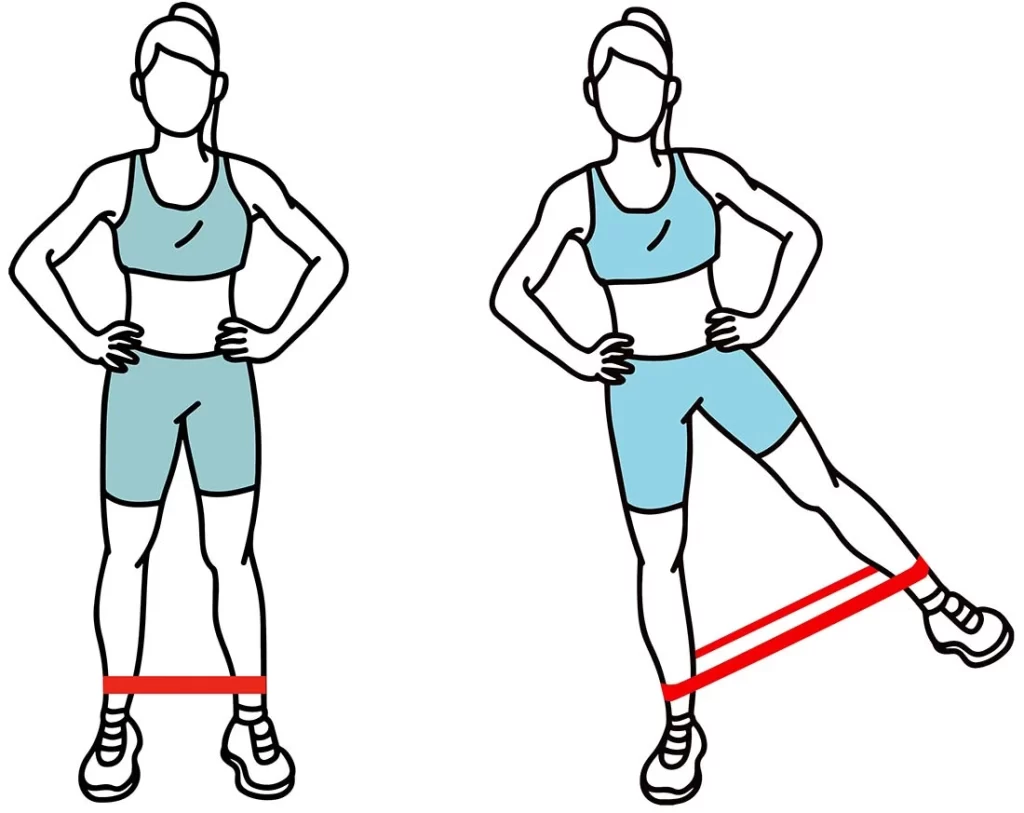
Strengthening exercises: As the healing progresses, the physical therapist will introduce strengthening exercises to target the muscles surrounding the hip joint. Strengthening these muscles helps provide stability and support to the injured ligament. Exercises may include hip abduction/adduction, hip extensions, hip bridges, squats, and lunges.
Balance and proprioception training: To improve stability and prevent future injuries, balance and proprioception exercises are often incorporated into the rehabilitation program. These exercises challenge the patient’s ability to maintain balance and body control while performing various movements. Examples include standing on one leg, performing single-leg squats, or using unstable surfaces like balance boards or foam pads.
Functional training: Once sufficient strength and stability are achieved, the physical therapist will progress to functional exercises that mimic activities of daily living or specific sports movements. This can include walking or running drills, stair climbing, jumping, or sport-specific movements. The goal is to prepare the patient for a safe return to their desired activities or sports.
Education and home exercise program: The physical therapist will provide education on proper body mechanics, posture, and techniques to prevent re-injury. They will also develop a customized home exercise program that the patient can continue independently to maintain strength, flexibility, and overall hip joint health.
Throughout the rehabilitation process, the physical therapist will closely monitor the patient’s progress, modify the treatment plan as needed, and provide support and guidance to ensure optimal recovery.
How to prevent hip ligament injuries?
Preventing hip ligament injuries involves a combination of factors, including proper conditioning, technique, and lifestyle choices. Here are some strategies to help prevent hip ligament injuries:
- Warm-up and stretching: Prior to any physical activity or exercise, it is important to warm up the muscles and joints to increase blood flow and flexibility. This can be done through dynamic stretching exercises that target the hip muscles and ligaments.
- Strengthening exercises: Building strength in the muscles surrounding the hip joint can help provide stability and support to the ligaments. Focus on exercises that target the hip abductors, adductors, flexors, and extensors. This can include exercises like squats, lunges, hip bridges, and lateral leg raises.
- Proper technique: Whether it’s during sports activities or everyday movements, using proper technique is crucial to prevent excessive stress on the hip ligaments. This includes maintaining good posture, using correct body mechanics, and avoiding sudden or jerky movements.
- Gradual progression: When starting a new exercise or sport, it is important to gradually increase intensity, duration, and frequency. This allows the body to adapt and build strength without overloading the hip ligaments.
- Rest and recovery: Giving the body enough time to rest and recover between workouts or activities is essential in preventing overuse injuries. Adequate rest allows the tissues to repair and rebuild, reducing the risk of ligament strain or tear.
- Cross-training: Engaging in a variety of activities can help prevent overuse injuries by distributing the workload across different muscle groups. Incorporate different types of exercises or sports into your routine to avoid placing excessive stress on the hip ligaments.
- Proper footwear: Wearing appropriate footwear that provides adequate support and cushioning can help absorb shock and reduce stress on the hip ligaments during physical activities.
- Maintain a healthy weight: Excess body weight can put additional strain on the hip ligaments. Maintaining a healthy weight through proper nutrition and regular exercise can help reduce the risk of ligament injuries.
- Listen to your body: Pay attention to any warning signs or symptoms of hip pain or discomfort. If you experience pain, swelling, or limited range of motion, it is important to rest and seek medical attention if necessary.
- Seek professional guidance: If you are unsure about proper techniques, or training programs, or have a history of hip injuries, it is beneficial to consult with a physical therapist or sports medicine professional. They can provide guidance on injury prevention strategies specific to your needs and help develop a personalized exercise program.
By incorporating these strategies into your routine, you can significantly reduce the risk of hip ligament injuries and maintain optimal hip joint health.
Risk factors
There are several risk factors that can increase the likelihood of hip ligament injuries. These include:
- Age: As we age, our ligaments naturally become less flexible and more prone to injury. Older individuals may have weakened or degenerated ligaments, making them more susceptible to strains or tears.
- Previous injuries: Individuals who have previously experienced hip ligament injuries are at a higher risk of re-injury. Once a ligament has been damaged, it may not fully heal or regain its original strength, making it more vulnerable to future injuries.
- Poor conditioning: Weak muscles surrounding the hip joint can lead to instability and increased stress on the ligaments. Lack of proper conditioning and strength in the hip muscles can make individuals more prone to ligament injuries.
- Overuse or repetitive movements: Engaging in activities that involve repetitive movements or excessive stress on the hip joint can increase the risk of ligament injuries. This includes activities such as running, jumping, or participating in sports that require frequent pivoting or twisting motions.
- Improper technique: Using incorrect body mechanics or poor form during physical activities can put excessive strain on the hip ligaments. This can occur during sports activities, weightlifting, or even everyday movements like lifting heavy objects or bending improperly.
- Sudden impact or trauma: Direct impact to the hip joint, such as a fall or collision during sports, can cause significant damage to the ligaments. These sudden forces can stretch or tear the ligaments, leading to injury.
- Obesity: Excess body weight places additional stress on the hip joint and ligaments. The increased load can make the ligaments more susceptible to strain or tears, especially during weight-bearing activities.
- Genetic factors: Some individuals may have a genetic predisposition to ligament laxity or weakness. This can make their ligaments more prone to injury, even with normal levels of physical activity.
- Hormonal changes: Hormonal imbalances, such as those that occur during pregnancy or menopause, can affect the strength and elasticity of ligaments. This can increase the risk of ligament injuries in these populations.
- Improper footwear: Wearing shoes that do not provide adequate support or cushioning can increase the risk of hip ligament injuries. Shoes with worn-out soles or improper arch support can alter the alignment of the hip joint and place additional stress on the ligaments.
It is important to be aware of these risk factors and take appropriate measures to minimize their impact. By addressing these risk factors and implementing preventive strategies, individuals can reduce their chances of hip ligament injuries and maintain optimal hip joint health.
FAQs
Hip ligament injuries refer to damage or tears in the ligaments that support the hip joint. These ligaments help stabilize the hip and allow for smooth movement.
Hip ligament injuries can occur due to various factors such as age, previous injuries, poor conditioning, overuse or repetitive movements, improper technique, sudden impact or trauma, obesity, genetic factors, hormonal changes, and improper footwear.
Symptoms of hip ligament injuries may include pain in the hip or groin area, swelling, tenderness, difficulty or pain with movement, instability or feeling like the hip is giving way, and limited range of motion.
Diagnosis of hip ligament injuries usually involves a physical examination by a healthcare professional, reviewing the patient’s medical history, and possibly imaging tests such as X-rays, MRI, or CT scans to assess the effect of the injury.
Treatment for hip ligament injuries may include rest, ice, compression, elevation (RICE), physical therapy exercises to strengthen the surrounding muscles and improve stability, pain medication or anti-inflammatory drugs, and in severe conditions, surgery may be needed to repair or for the reconstruction of the damaged ligaments.
While it may not be possible to prevent all hip ligament injuries, taking preventive measures can help minimize the risk. This includes maintaining proper conditioning and strength through regular exercise, using proper technique during physical activities or sports, avoiding overuse or repetitive movements, wearing appropriate footwear, and being cautious of sudden impacts or trauma to the hip.
The recovery time for a hip ligament injury can vary depending on the severity of the injury and the individual’s overall health. Minor injuries may heal within a few weeks with conservative treatment, while more severe injuries or surgical repairs may require several months of rehabilitation.
If not properly treated or if there are recurrent injuries, hip ligament injuries can potentially lead to long-term complications such as chronic pain, instability, limited range of motion, and increased risk of future injuries. It is important to seek proper medical attention and follow a comprehensive rehabilitation program to minimize the chances of long-term complications.

